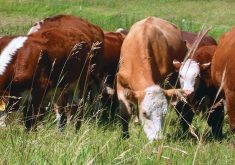Fears that rising farmland values may be building toward a bubble are overblown, according to a leading U.S. farmland investor.
The fundamental factors driving rising farmland values are long term and are coupled with low debt levels in the sector, indicators not commonly associated with asset class “bubbles,” said Hancock Agricultural Investment Group (HAIG) president Jeffrey Conrad.
“You cannot look at farmland values in a vacuum. You have to look at your earnings as well, and when you look at that you get a different story,” Conrad said. “I don’t think we have a bubble.”
Read Also

Mazergroup’s Bob Mazer dies
Mazergroup’s Bob Mazer, who helped grow his family’s company into a string of farm equipment dealerships and the main dealer for New Holland machinery in Saskatchewan and Manitoba, died July 6 from cancer.
Boston-based HAIG manages about $1.3 billion of agricultural real estate for institutional investors, including public and corporate pension funds and corporate taxable investors, and is among the largest U.S. players in this space. The group oversees about 210,000 acres of U.S. farmland across the country.
Banking officials, including Federal Deposit Insurance Corp. chairman Sheila Bair, have been growing increasingly vocal about rising values for U.S. farmland.
Farmland prices are 58 per cent above their 2000 levels in inflation-adjusted terms, according to the FDIC. Unlike other real estate assets, farmland prices have not fallen during the economic downturn.
Still, Conrad said his group continues to actively buy up U.S. farmland despite rising values that have key corn and soybean land in the U.S. Midwest
and Plains commanding over $7,000 an acre in some cases.
Drawing on recent USDA data, HAIG estimates farm debt has declined 39 per cent in real terms since peaking in 1981 while net farm income per acre increased 52 per cent.
Hancock said even though the lofty prices now being commanded by corn, soybeans and wheat in the U.S. futures markets may not be sustained over the long term, farmland returns for investors have remained consistently in the black despite swings in commodity prices over the last several years.
A growing global population and strong export demand for corn, soybeans and other crops, combined with a weaker dollar that further enhances the competitiveness of U.S. commodities, are all factors favouring further gains in farmland values.
“The real unknown that we are all facing is will the demand continue to grow in China and some of these emerging markets,” Conrad said. “As long as we have a strong export market … I don’t think we are in a position to see a bubble here.”
———
“Idon’tthinkwehaveabubble.”
– JEFFREY CONRAD


















